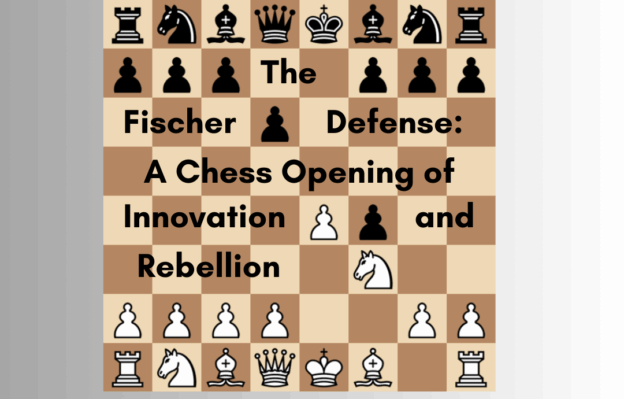In the vast realm of chess openings, the Fischer Defense stands as a symbol of innovation, creativity, and a dash of rebellion. Named after the iconic chess prodigy and World Chess Champion Bobby Fischer, this unorthodox defense challenges traditional principles and invites players to think outside the box. This essay explores the history, principles, and enduring appeal of the Fischer Defense.
Historical Origins:
The Fischer Defense, also known as the Robatsch Defense, emerged as a response to 1.e4 in the mid-20th century, gaining prominence in the 1960s. Named after Wolfgang Uhlmann, a strong East German chess player, this defense became synonymous with Bobby Fischer when he employed it in high-profile games. Fischer’s daring choice epitomized his non-conformist approach to chess.
Key Moves and Variations:
The Fischer Defense typically arises after the opening moves 1.e4 g6 2.d4 Bg7. Black delays the development of the d7-knight and opts for a flexible pawn structure, intending to strike at the center and kingside later in the game. The Fischer Defense can lead to various setups, including fianchettoing the king’s bishop and potentially launching a pawn storm on the kingside.
Principles and Characteristics:
- Hypermodern Ideals: The Fischer Defense embodies hypermodern principles, challenging the classical idea of immediate pawn centralization. Black’s pawn on g6 allows for fianchettoed bishops, indirect control of the center, and opportunities for dynamic pawn breaks.
- Flexibility: The Fischer Defense offers flexibility in piece development and pawn structure. Black can choose between various setups, tailoring the game to suit their style and preferences.
- Counterattacking Potential: This defense thrives on counterattacking potential. By encouraging White to occupy the center, Black seeks opportunities to undermine White’s pawn structure and launch swift counterattacks, often on the kingside.
Modern Relevance:
While the Fischer Defense may not be the most common choice among elite grandmasters, it remains a favorite of creative and unconventional players at all levels. Its adaptability and potential to steer the game into less explored territory make it a valuable addition to any player’s repertoire.
Famous Practitioners:
Bobby Fischer’s use of the Fischer Defense in high-stakes matches, including his famous victory over Boris Spassky in the 1972 World Chess Championship, has immortalized this opening. Fischer’s fearless approach to chess and his willingness to challenge conventional wisdom continue to inspire players to explore uncharted territory.
Conclusion:
The Fischer Defense represents a rebellious spirit in chess, an embodiment of the idea that innovation and creativity can disrupt established norms. It serves as a reminder that chess is not merely about following established paths but about forging new ones, testing the boundaries of possibility, and daring to think differently. In the Fischer Defense, players find not just an opening but a philosophy, a philosophy that celebrates the art of rebellion in a game steeped in tradition and strategy.
